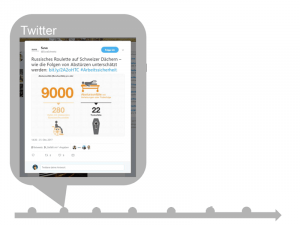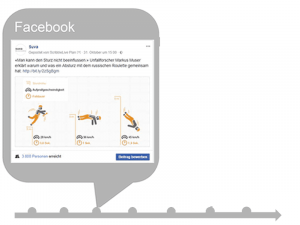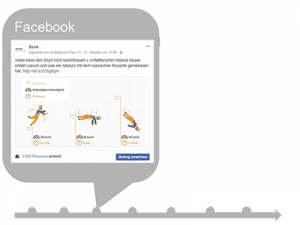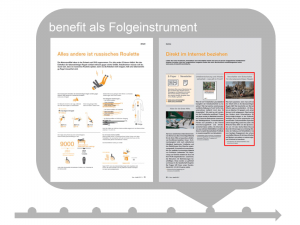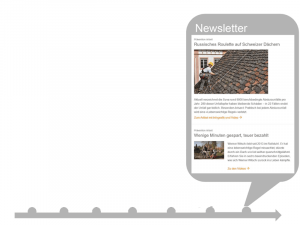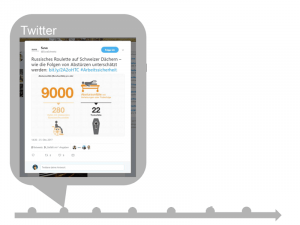Scompler on assignment at the Swiss National Accident Insurance Fund (Suva)
Newsroom organization with Scompler at SUVA: "We talk more about content"
The Swiss National Accident Insurance Fund (Suva) has been using Scompler to organize its communication since 2016. Marcel Hauri, Head of Publishing and Newsroom at Suva, gave us an insight into the use of Scompler and the daily work in the newsroom.
"Transparency": Marcel Hauri answers our question without hesitation as to the most obvious benefit Scompler provides him and his colleagues in communication practice. To follow up immediately: "People talk to each other more about content." He describes the decision two years ago to install a newsroom for daily collaboration in corporate communications as a major change project in order to promote communication between all stakeholders.
Change processes: Collaboration yes, but how is the question
Marcel Hauri has been working at Suva since mid-2015 and has been Head of Newsroom since the beginning of 2017. When he started his job, he found an organizational understanding that he believes is the basis for establishing a functioning way of working in the newsroom in companies. He calls it the "single point of entry": In Suva's case, the Communications and Marketing department, as the first point of contact in the company, manages all communication and thus enables a consistent external presence without other departments simply communicating what they want.
The awareness of the need for uniform cooperation was therefore already present before the start of the "Newsroom" project, but it was not yet reflected in the working methods. Silos in which departments isolated themselves from others no longer existed in our heads, but were almost universal in the way we worked: Colleagues had a total of around 20 Excel lists or Word documents, each with a different communication plan, which everyone saved in their personal filing system.
Otherwise, Suva had already prepared well for the change in advance. A distinction had already been made between topic-oriented work and downstream publication in channels. Communication tools, target groups and other requirements such as detailed briefings were defined in a comprehensive content strategy. However, less attention was paid to how the tools were to be used in practice.
The daily "stand-up", the morning editorial meeting
To make up for this shortcoming, we had to adopt unusual working practices such as the daily "stand-up", the morning editorial meeting in which topics and distribution were discussed.

The Suva colleagues in their real newsroom environment. In the background, Scompler provides support as a virtual newsroom.
"In the editorial meetings, I quickly realized that I actually had to keep my own list to keep track of all my own publication projects. Some of my colleagues used the Outlook calendar and set up a workaround with deadlines to keep track of their publication activities. It was all - in Switzerland we would say - a bit "handglismet", hand-knitted." Which campaign was currently running, which mailing was going out, which newsletter or whatever else was being planned was completely opaque across all departments.
"The content strategy described an "orchestra in harmony", but in practice there were too many soloists playing at the same time," says Hauri.
So what was missing, and what Marcel Hauri immediately saw as essential in his role as newsroom manager, was the introduction of an integrated tool to bring together the numerous communication plans. According to Hauri, it was only a small step to Scompler : "With Scompler , we were able to really get things in order."
Change management must demonstrate added value
He laughs when we ask him whether the tool was accepted internally straight away. "Of course not! Everyone agreed that we need to communicate more and more transparently with each other, but if you want to use a tool for this, the almost unanimous reaction is: don't!"
In his view, the transformation of working methods is the biggest barrier to entry for new technology. In many companies, employees in the communications departments try to manage as much as possible with standard software such as Microsoft Word and Microsoft Excel. This is obvious because practically everyone is familiar with these programs and there seems to be no need to spend money on training. "Instead, I showed the added value of the lifecycle that can be mapped in Scompler - Plan, Produce, Promote, Publish, Prove. When my colleagues understood this application benefit, their reaction was: Actually, it's really cool what you've bought."
Nevertheless, it remains a challenge to redirect long-standing colleagues to Scompler . New employees, on the other hand, immediately accept working in Scompler . "Our new social media manager does everything in Scompler, she doesn't use anything else. There is no more general discussion about tools."
Scompler can be adapted very well to the respective company requirements
Marcel Hauri believes it is important to emphasize the special nature of Scompler . "There are different ideas behind Scompler, aren't there? And that's the good thing: everyone can give the tool more weight where they need it. For agencies, transparency may not be so important, but the strategy section and the briefing functions are, for others the social collaboration approach. The beauty of the software is its many features, everyone can take their own part out of it. We need 30-40% of the tool. But that's the same with Word and Excel. Which software do you use to its full potential? Do you make full use of Twitter? Probably not."
From Hauri's point of view, there is therefore a "clear recommendation for onboarding! It would be best to first discuss the setup with the project manager and then compare it with the team in the actual training. It helps to discuss your individual approach to communication with the professional again. Especially to see whether you have understood the application of Scompler correctly so that you can use the tool properly."
We ask Marcel whether the way in which the Swiss National Accident Insurance Fund communicates has changed since Scompler was launched.
"The tool helps communication experts who work on a topic-oriented basis enormously with planning. Define topics, specify post types and posts and move them later if necessary, or assign responsibilities within the team, for example.
But the tool can't give you the good stories. No software can do that (yet). That still requires thinking and empathetic communicators who approach the personas, bring in emotions and create relevance. We have already internalized that.
However, I can very well imagine that the tool can support the transformation to this way of thinking with the SCOM framework shown."
"The effort for reporting has become atomized"
Marcel Hauri particularly likes the reporting function with its filter and analysis options. "If the occupational safety department asks what we've done on the subject of falls from a height, I can filter it out with a click and send them an overview graphic. Five videos, an infographic, 27 Facebook posts, 10 tweets on Twitter... We used to pull out Twitter figures, Excel/CSV files or other documents, but now everything is there. One click - that's how much we've done in the last few weeks.
If I put it in correctly at the front, it comes out correctly at the back. The effort for reporting has been atomized. The investment in Scompler was worth it for that alone."
Suva in figures
1716
Contributions in the last 20 months
14
Post types used
868
Social media: Facebook posts
638
Social media: Tweets
Story flow at Suva - distribution of the story in the various channels with the homepage as the starting point
Suva organizes stories with the website as the starting channel and builds further distribution on this. In the emotionally charged story (or campaign) "Russian Roulette", the individual channels are gradually populated with content.
This approach follows a standardized publication practice that uses numerous content formats at Suva.
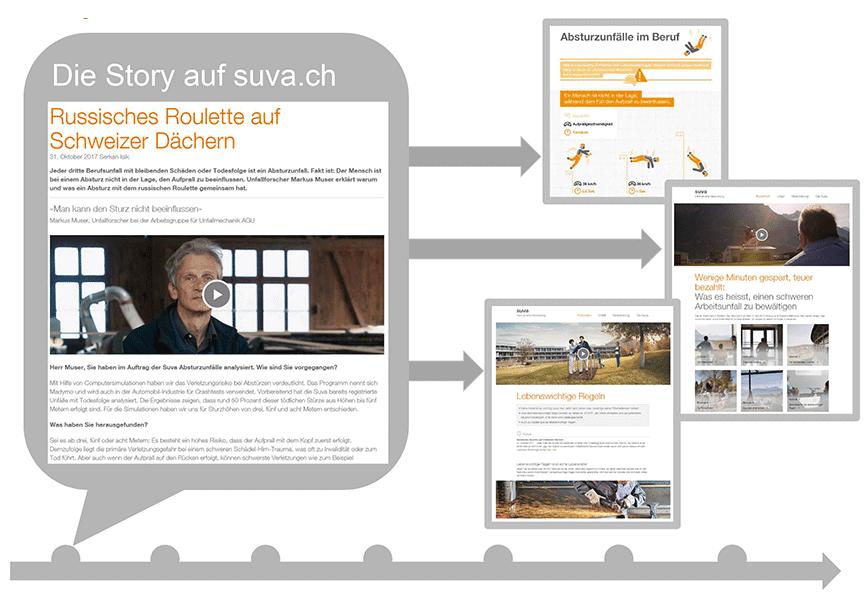
The suva.ch website serves as the first point of publication, after which the story is presented in the appropriate format on other channels.
Presentation in Scompler
In this example, the superordinate topic "Occupational safety" contains the story "Russian roulette on Swiss roofs." The posts are then created in the story. The channels are defined as post types. Different view options lead to a better overview of the posts.
View theme planning
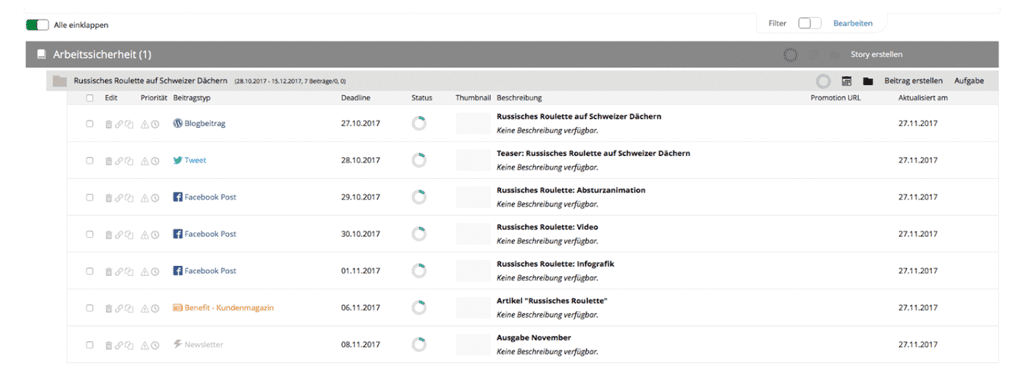
Calendar view
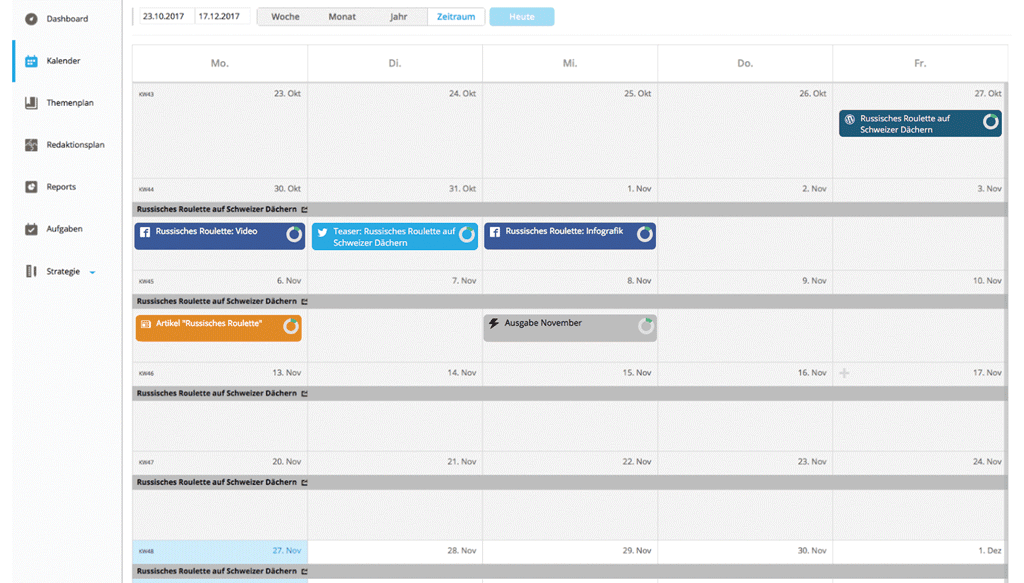
Onboarding process: Scompler integration at Suva
The implementation of Scompler was prepared, agreed and adapted over a period of several weeks by a Scompler expert together with the project manager at Suva, followed by a kick-off meeting at Suva in Lucerne.
The aim of the onboarding was to map Suva's familiar structures and procedures in Scompler in such a way that the users felt that their needs were met. The hurdle of using new software should be perceived as being as low as possible. This only works if every user sees the relevance and usefulness of the platform in their own area of responsibility.
